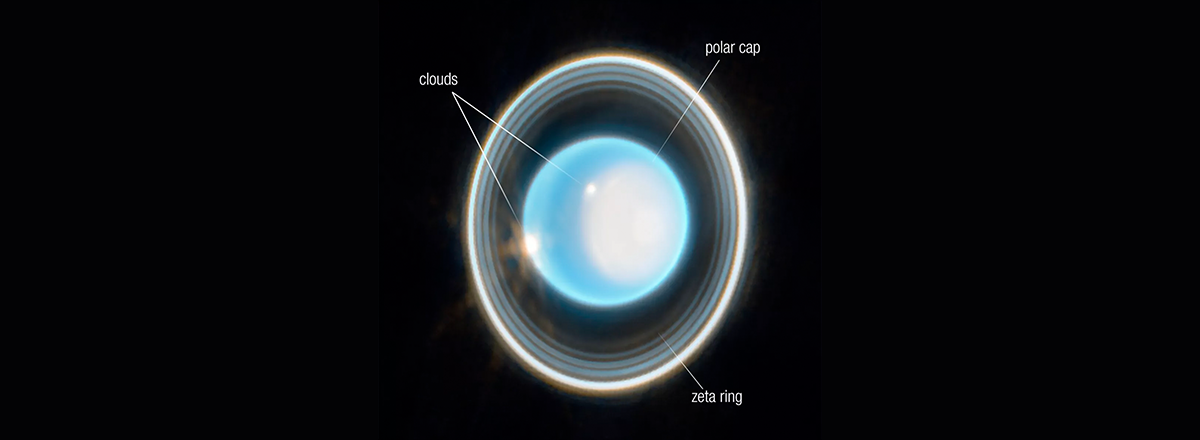NASA's James Webb Telescope Captures New Images of Uranus
The so-called polar cap is clearly visible on the right side of the planet in the image. It appears when the pole is exposed to direct sunlight in the summer and disappears in the fall.

NASA has published new images of Uranus taken by the James Webb Space Telescope that show the planet's rings and large satellites.
James Webb observed Uranus in the near-infrared with the instrument's sensitive optics – NIRcam. The resulting images show 11 of the 13 dust rings surrounding the planet. Some of the rings are so bright that they may appear to merge into one large ring. Also visible are six of the brightest Uranus satellites of the 27 known today.
The image reveals some features of the planet's dynamic atmosphere. It also shows the planet's clouds and the bright northern polar region.
The so-called polar cap is clearly visible on the planet's right side in the image. It appears when the pole is exposed to direct sunlight in the summer and disappears in the fall.
Uranus is a unique planet as it rotates on its side at a nearly 90-degree angle from the plane of its orbit. The planet has extreme climatic conditions in this regard: the planet's poles are exposed to sunlight for long periods of time and then plunge into darkness for an equally long period of time. It takes 84 years for Uranus to orbit the Sun.

